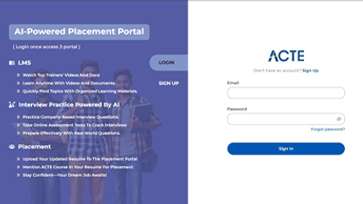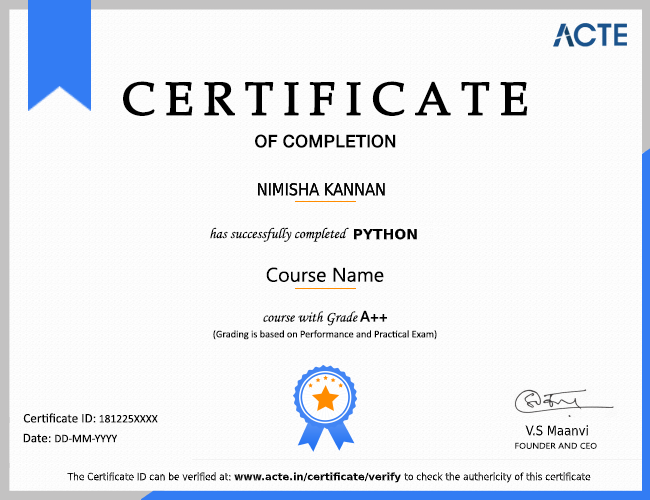ACTE provides the opportunity to enhance ideas of ios app development through online and classroom training, so grasp the oppurtunity to become an app developer.This course aims at inculcating the basics of iOS development tools that are employed in different processes of iPhone programming that includes XCode, Interface Builder, and Objective-C and even the extensive Cocoa API framework.Enroll Now with us ACTE iOS Classroom & Online Training Course.
Become an iOS Developer in 2020: The 3 Pillars to Jumpstart your Career. More and more companies are relying on mobile apps, so iOS developers are in high demand. Becoming an iOS developer takes some effort though, and the talent shortage keeps driving salaries higher and higher, even for entry-level positions
Yes, iOS developers are in demand. But the basic rule is demand and supply, and now days market is over loaded with iOS developers. It's always good if some one can work on every part of a software system. You should be able to write back-end as well for your mobile(iOS) apps.
- Buy a Mac (and iPhone — if you don’t have one)
- Install Xcode.
- Learn basics of programming (probably the hardest point).
- Create a few different apps from step-by-step tutorials.
- Start working on your own, custom app.
- In the meantime, learn as much as you can about software development generally.
- Finish your app.
- Publish your app to the App Store.
- Upload your app to GitHub.
- Contact the company you want to work in!
We are happy and proud to say that we have strong relationship with over 700+ small, mid-sized and MNCs. Many of these companies have openings for IOS analyst. Moreover, we have a very active placement cell that provides 100% placement assistance to our students. The cell also contributes by training students in mock interviews and discussions even after the course completion.
- Education (if degree obtained or important classes taken)
- Work experience.
- Open source (provide links)
- Your apps (provide links if possible)
- Most relevant technical skills (keep it minimal)
- Anything else noteworthy (clubs you were in, developer meetup you founded, hackathon you won)
Let's first talk about what skills you need to build your own apps. Master Xcode: Xcode is the Mac app you use to create apps. Swift Programming: Swift is the powerful programming language that you use to code iOS, macOS, tvOS and watchOS apps. Build UIs: Every app needs a User Interface (UI).
Yes you can learn Swift and iOS Development without any prior coding experience. Swift has been designed by some of the brightest minds at Apple and they have made sure that the language is easy to learn even by absolute beginners.
Our courseware is designed to give a hands-on approach to the students in IOS. The course is made up of theoretical classes that teach the basics of each module followed by high-intensity practical sessions reflecting the current challenges and needs of the industry that will demand the students’ time and commitment.
Our course runs full-time for 12 weeks, but iOS development can take way longer to learn for a few reasons: First iOS basics are just super hard to get comfortable with on your own—mostly because Objective C is a difficult language in a lot of different ways (it looks pretty funky compared to other languages).
Some things are just very difficult and hard to learn because mobile development is a very difficult area of software engineering.But on the other hand users expect apps to be very fancy and powerful. So it is indeed very hard to become an iOS developer – and even harder if you don't have enough of passion for it.
- You'll be working with a technology you are passionate about.
- You're likely to make more money on iOS.
- iOS developer tools are more sophisticated.
- iOS is considered easier for beginners.
- There'll be less updates to make.
iOS App Extensions
- Some time ago, Apple created a way to expand an app’s capabilities to go beyond the app itself. This allowed developers to provide options for interacting with other apps and enabled the user to access the app’s features without having to open it!
- This type of programming is called “iOS App Extensions.” These extensions are parts of the app and work independently of one another, as if they were plug-ins with their own lives, and they orbit the Apple system itself allowing for customized modifications.
- This has allowed iOS developers to think beyond apps and to provide tools that create a more complete User Experience.
- 23 templates exist for creating extensions. They range from photo editing, file management, daytime widget actions to notifications and custom keyboards
- Each type of extension is developed for a specific task. We use a “Share Extension” to allow users to share something directly to their app from a browser. For custom notifications, including granting media control and user-customizable actions, we use a “Notification Content Extension.” We can even create a custom keyboard for your app with the “Custom Keyboard Extension.” We should choose the extension based on the function we wish to implement.
- Each extension is attached to an extension point, a single, closed-scope system area that provides APIs for creating extensions specific to that area. An extension can only have one extension point, for this reason, it’s not possible to create a generic extension that functions for more than one target.
The following is a list of current iOS extension points and their functions
Action – Manipulates or view content coming from an app
Audio Unit – Create an audio stream to send to an app, or modify the audio coming from an app and send it back
Broadcast UI – Video recording interface and app screen
Broadcast Upload – Upload recorded video to a server (game replays, live streaming)
Call Directory – Identify and block calls from a specific number
Content Blocker – Block content from safari, such as Javascript and cookies, by following predetermined rules
Custom Keyboard – Substitute the system’s keyboard with a custom one for all apps
Document Provider – Give access to an archive respository
iMessage – Interact with the iMessage app
Intents – Integrate Siri into the app, ie) customized intentions and personalized suggestions.
Intents UI – Allow customization to the Siri or maps interface based on a specific task
Notification Service – Custom notification service, which allows POST or GET calls inside notifications
Photo Editing – Edit a photo or video with the iphotos app
Spotligth Index – Index app content for a time when it won’t be running
Sticker Pack – Create a series of stickers to use in the iMessages app.
Today – Allow the synching of up-to-date information or create a personalized task in the Today section of the Notification center.
VPN – Create a VPN Tunnel or Proxy for personalized network access.































